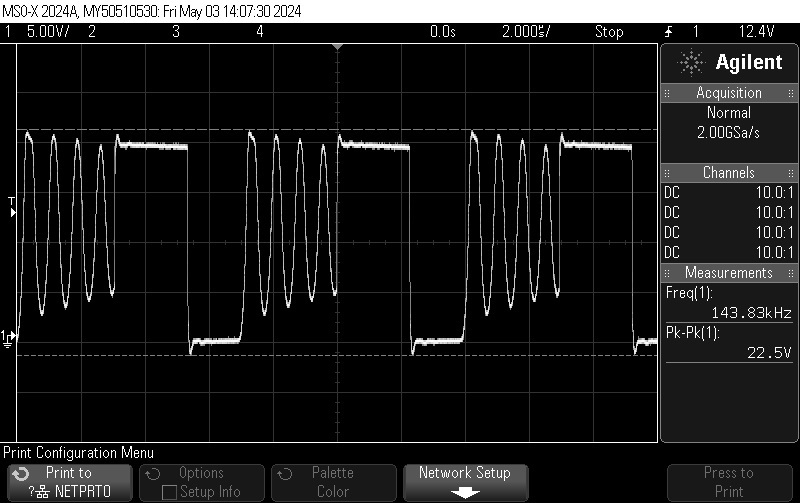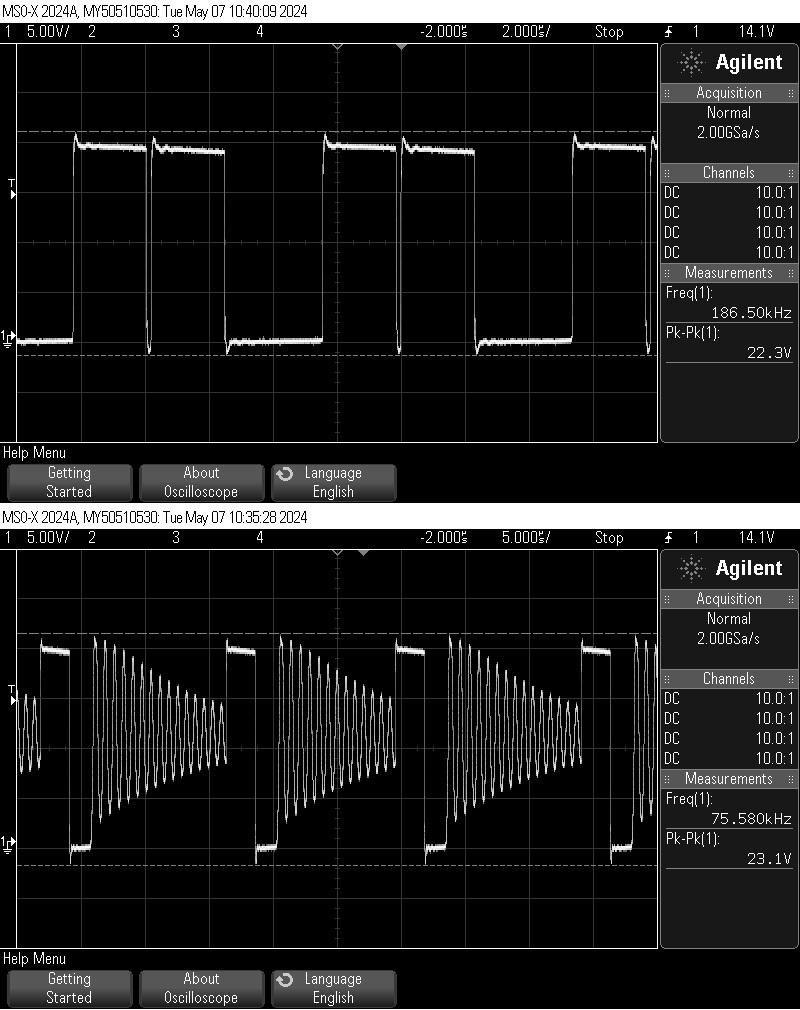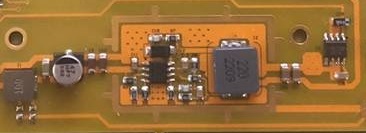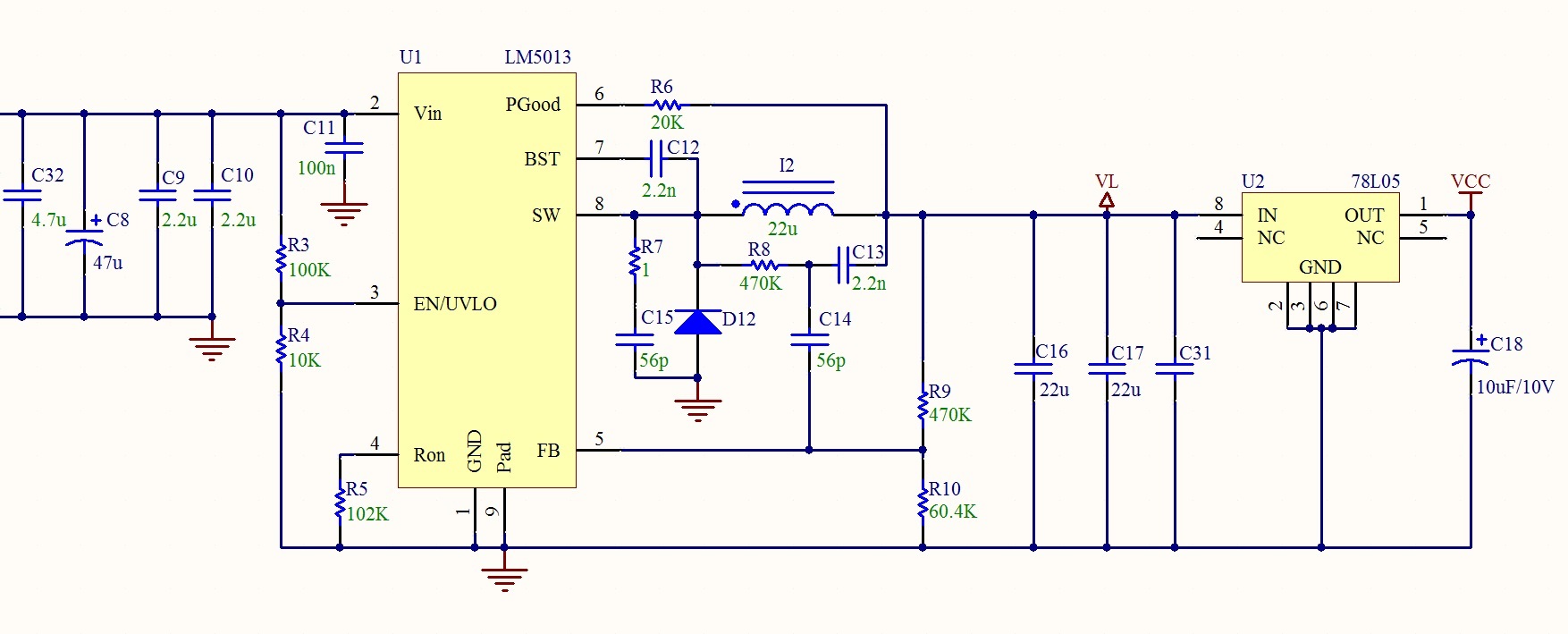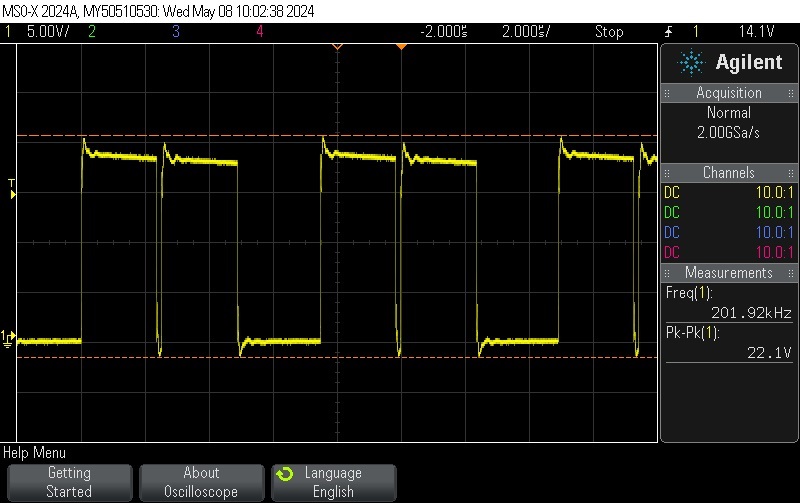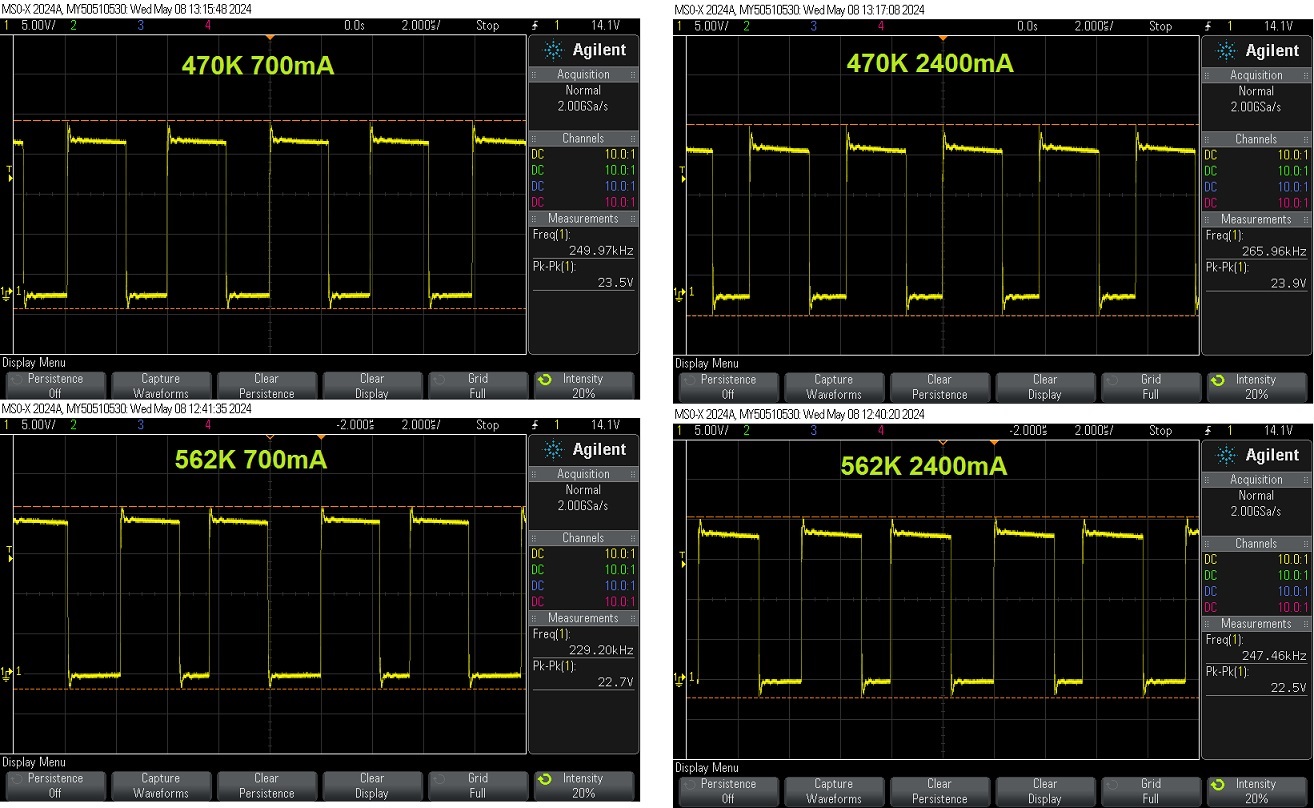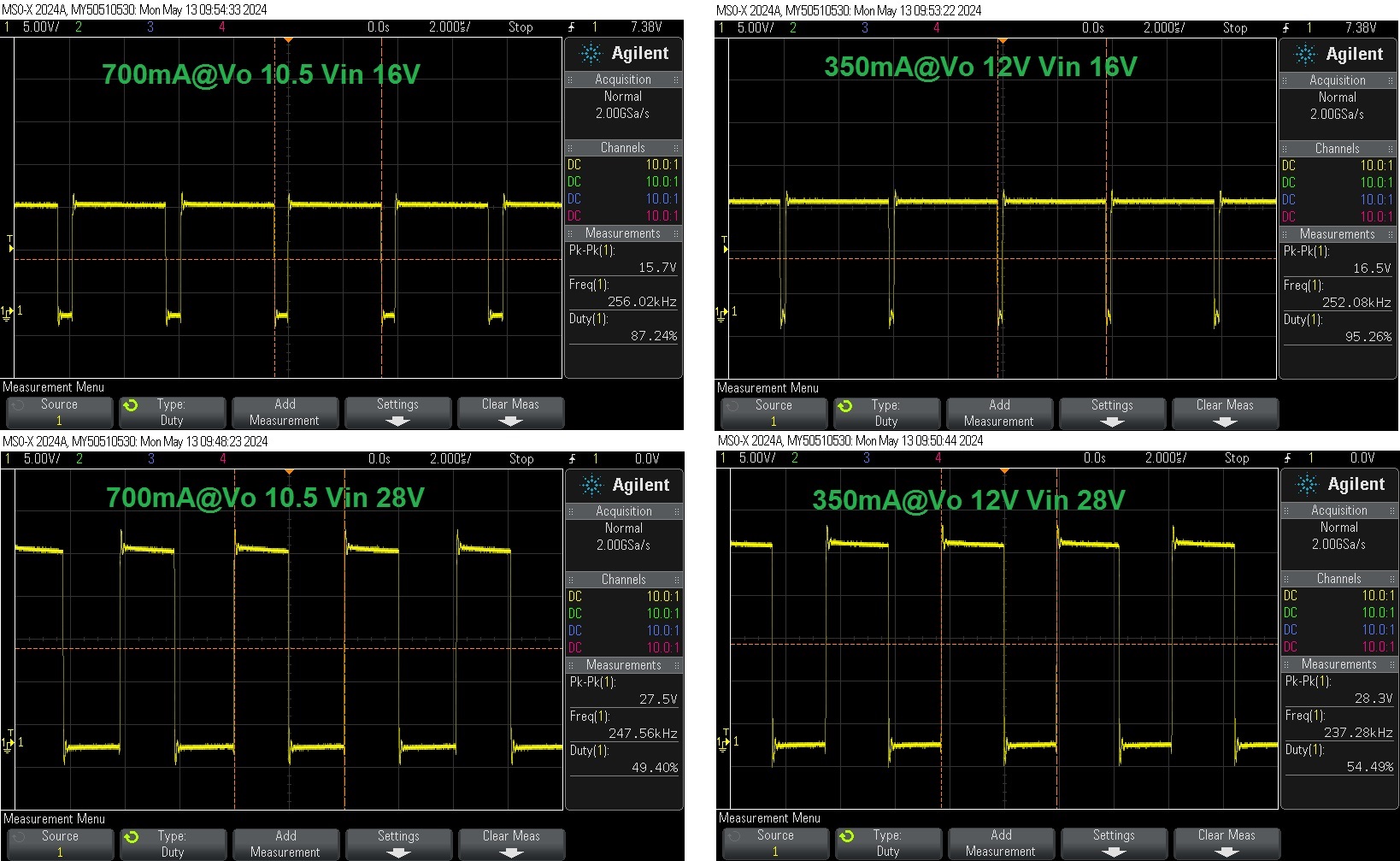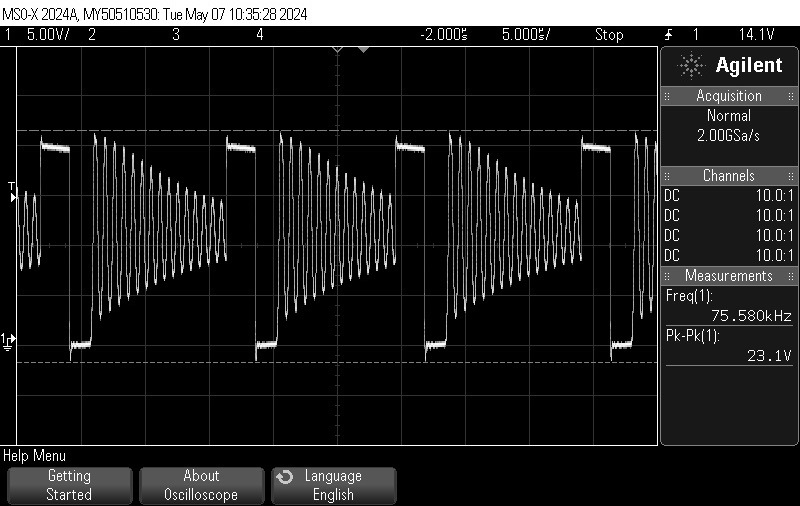Other Parts Discussed in Thread: LM5164, LM5013, LM5165
I need to use the LM5164 with a load that has 2 modes of operation:
700mA normally and 80mA while in standby.
While there are no design issues for the 700mA load, the Excel Design Tool shows an error when entering a load of less than 100mA.
To be more precise in the explanations it is clearly stated that the cell will become red when entering a value less than 100mA.
I see no explanation about minimum current load in the data sheet.
Reading other threads I found the referenced one, where the option to use a separate Ron but it seems this is not what will solve the problem.
Increasing the frequency requires a different inductor and ripple generation resistor.
To make the long story short, can the LM5164 work with low current? And if yes, how can I do it for the 2 current levels.



